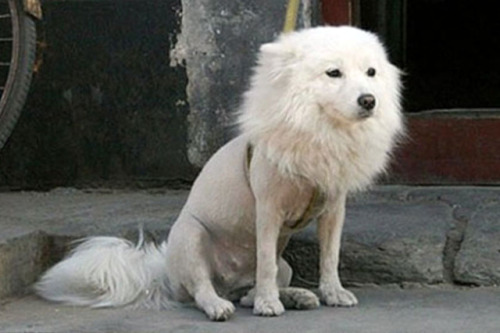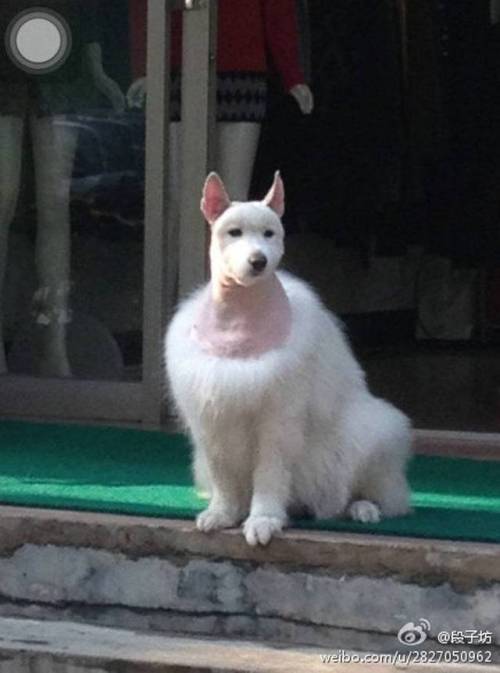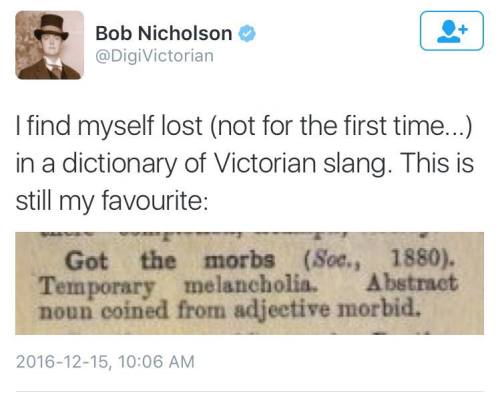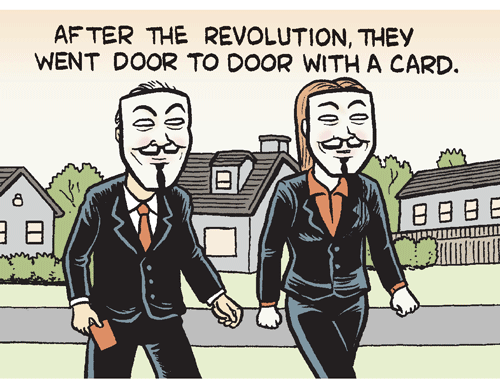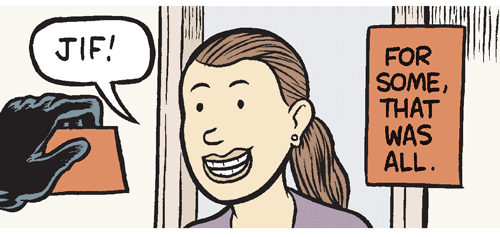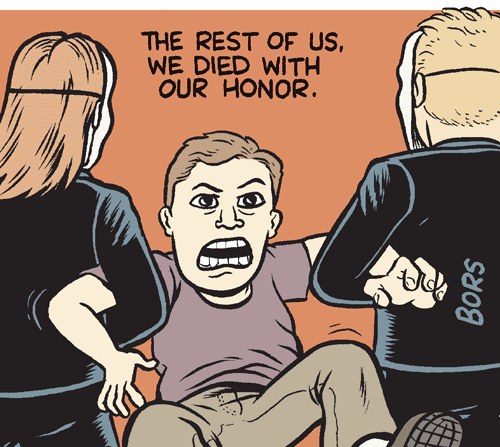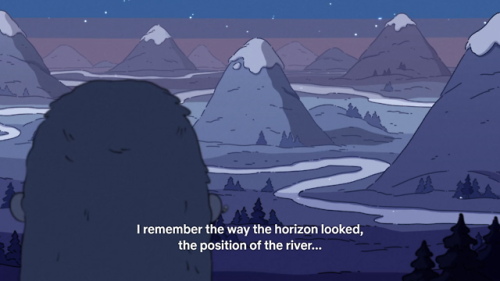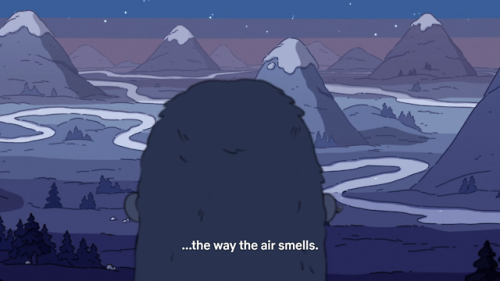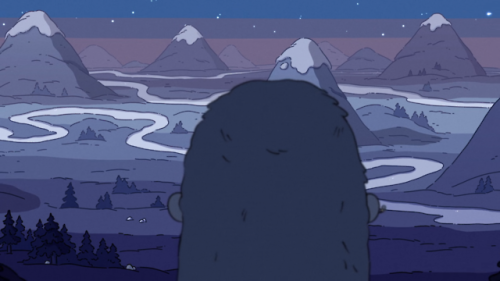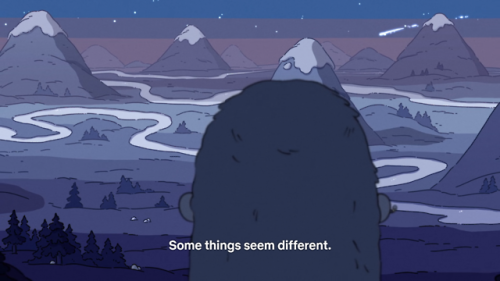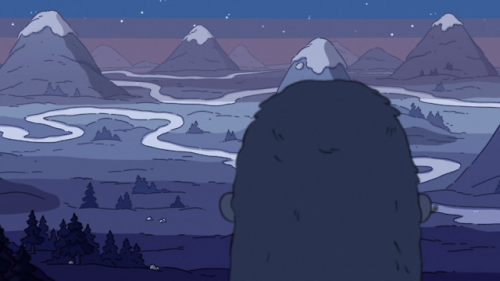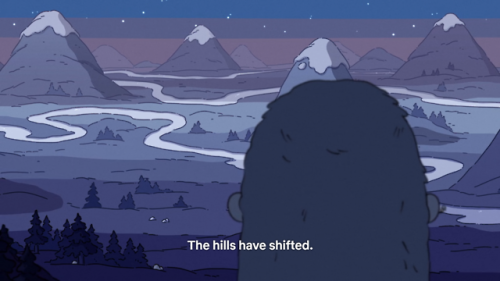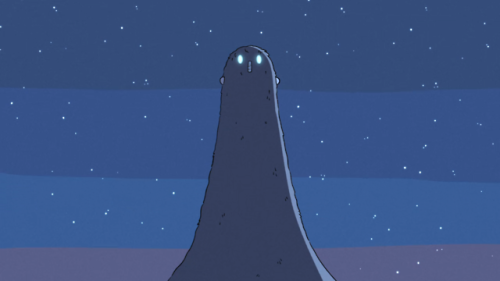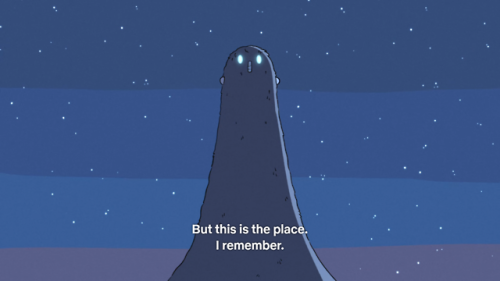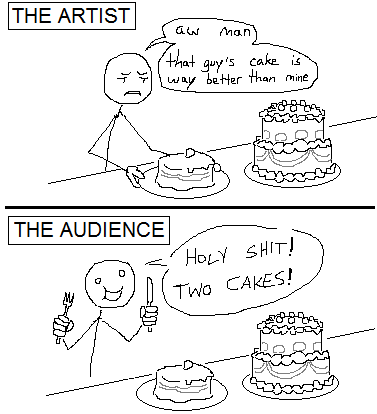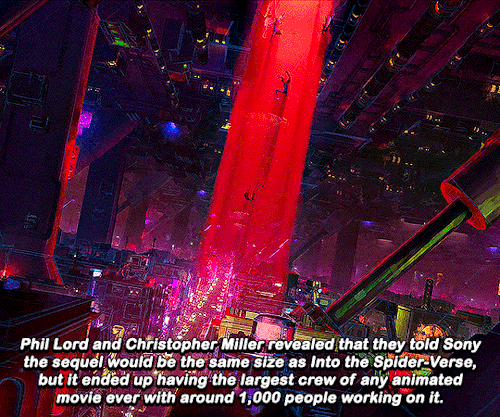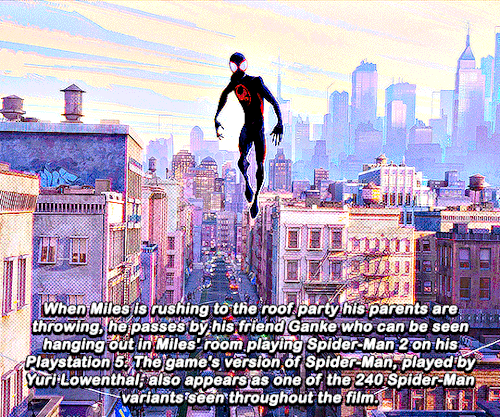
157 posts
Latest Posts by jerichos-reblog-repository - Page 2
normal poet: uses things like alliteration and onomatopoeia and imagery. ya kno, poet stuff
synesthetic poet: haha these words look pretty together
People who use the word “literally“ for something that can’t be literal is the reason I want man kind to be extinct.
One of the details that gets lost in the transition of manga-to-anime for Fullmetal Alchemist, is the overt presence of foreign language. For example, the Xingese characters actually regularly speak Xingese amongst each other. While they aren’t the only example of foreign language being spoken, they are the most prominent. In the anime, every character no matter what race or what country they are from, speaks the same language as a translation convention. The only real hints that there are other languages present are very minor, like the fact that Ling wrote his message to Lan Fan completely in Kanji and that no one outside of them could read it.

However, the manga has an interesting convention to denote that foreign language is being spoken, by giving every foreign language speech bubbles that are horizontal instead of vertical. This is lost slightly even when the manga gets translated because in Japanese, the vertical speech bubbles also have vertically typeset dialogue which help better distinguish the languages. Nonetheless, the speech bubble shapes are very distinct. When Ling talks to Ed, his speech bubbles are all vertical

As are Lan Fan’s

But look at Fu’s thought bubbles here and compare them to Paninya and Al’s vertical bubbles. They’re horizontal! Fu is shown to be thinking in his native tongue!

Conversations that we heard all in one language in the anime, were supposed to be in Xingese.
Like Ling, Lan Fan, and Fu on the roof.

And Ling speaking with Mei at the end of the final battle.

Its just one of those really neat details Arakawa uses that makes FMA’s world just a bit richer in the manga than what we see in the anime version of the series.
english: coconut oil
french: :)
english: oh boy
french: oil of the nut of the coco
I’ve seen a lot of curious people wanting to dive into classical music but don’t know where to start, so I have written out a list of pieces to listen to depending on mood. I’ve only put out a few, but please add more if you want to. hope this helps y’all out. :)
stereotypical delightful classical music:
battalia a 10 in d major (biber)
brandenburg concerto no. 5
brandenburg concerto no. 3
symphony no. 45 - “farewell” (haydn)
if you need to chill:
rondo alla turca
fur elise
anitra’s dance
in the steppes of central asia (borodin) (added by viola-ology)
if you need to sleep:
moonlight sonata
swan lake
corral nocturne
sleep (eric whitacre) (added by thelonecomposer)
if you need to wake up:
morning mood
summer (from the four seasons)
buckaroo holiday (if you’ve played this in orch you might end up screaming instead of waking up joyfully)
if you are feeling very proud:
pomp and circumstance
symphony no. 9 (beethoven; this is where ode to joy came from)
1812 overture
symphony no. 5, finale (tchaikovsky) (added by viola-ology)
american (dvořák)
if you feel really excited:
hoedown (copland)
bacchanale
spring (from the four seasons) (be careful, if you listen to this too much you’ll start hating it)
la gazza ladra
death and the maiden (schubert)
if you are angry and you want to take a baseball bat and start hitting a bush:
dance of the knights (from the romeo and juliet suite by prokofiev)
winter, mvt. 1 (from the four seasons)
symphony no. 10 mvt. 2 (shostakovich)
symphony no. 5 (beethoven)
totentanz (liszt)
quartet no. 8, mvt. 2 (shostakovich) (added by viola-ology)
young person’s guide to the orchestra, fugue (britten) (added by iwillsavemyworld)
symphony no. 5 mvt. 4 (shostakovich) (added by eternal-cadenza)
marche slave (tchaikovsky) (added by eternal-cadenza)
if you want to cry for a really long time:
fantasia based on russian themes (rimsky-korsakov)
adagio for strings (barber)
violin concerto in e minor (mendelssohn)
aase’s death
andante festivo
vocalise (rachmaninoff) (added by tropicalmunchakoopas)
if you want to feel like you’re on an adventure:
an american in paris (gershwin)
if you want chills:
danse macabre
russian easter overture
egmont overture (added by shayshay526)
if you want to study:
eine kleine nachtmusik
bolero (ravel)
serenade for strings (elgar)
scheherazade (rimsky-korsakov) (added by viola-ology)
pines of rome, mvt. 4 (resphigi) (added by viola-ology)
if you really want to dance:
capriccio espagnol (rimsky-korsakov)
blue danube
le cid (massenet) (added by viola-ology)
radetzky march
if you want to start bouncing in your chair:
hopak (mussorgsky)
les toreadors (from carmen suite no.1)
if you’re about to pass out and you need energy:
hungarian dance no. 1
hungarian dance no. 5
if you want to hear suspense within music:
firebird
in the hall of the mountain king
ride of the valkyries
night on bald mountain (mussorgsky) (added by viola-ology)
if you want a jazzy/classical feel:
rhapsody in blue
jazz suite no. 2 (shostakovich) (added by eternal-cadenza)
if you want to feel emotional with no explanation:
introduction and rondo capriccioso
unfinished symphony (schubert)
symphony no. 7, allegretto (beethoven) (added by viola-ology)
canon in d (pachelbel)
if you want to sit back and have a nice cup of tea:
st. paul’s suite
concerto for two violins (vivaldi)
l’arlésienne suite
concierto de aranjuez (added by tropicalmunchakoopas)
pieces that don’t really have a valid explanation:
symphony no. 40 (mozart)
cello suite no. 1 (bach)
polovtsian dances
enigma variations (elgar) (added by viola-ology)
perpetuum mobile
moto perpetuo (paganini)
pieces that just sound really cool:
scherzo tarantelle
dance of the goblins
caprice no. 24 (paganini)
new world symphony, allegro con fuoco (dvorak) (added by viola-ology)
le tombeau de couperin (added by tropicalmunchakoopas)
carnival of the animals (added by shadowraven45662)
if you feel like listening to concertos all day (I do not recommend doing that):
concerto for two violins (bach)
concerto for two violins (vivaldi)
violin concerto in a minor (vivaldi)
violin concerto (tchaikovsky) (added by iwillsavemyworld)
violin concerto in d minor (sibelius) (added by eternal-cadenza)
cello concerto in c (haydn)
piano concerto, mvt. 1 (pierne) (added by iwillsavemyworld)
harp concerto in E-flat major, mvt. 1 (added by iwillsavemyworld)
and if you really just hate classical music in general:
4′33″ (cage)
a lot of these pieces apply in multiple categories, but I sorted them by which I think they match the most. have fun exploring classical music!
also, thank you to viola-ology, iwillsavemyworld, shayshay526, eternal-cadenza, tropicalmunchakoopas, shadowraven45662, and thelonecomposer for adding on! if you would like to add on your own suggestions, please reblog and add on or message me so I can give you credit for the suggestion!
there’s nothing purer or better than how much kids enjoy being picked up and then hurled at soft surfaces
The synesthesia feel of “this thing definitely has a Colour but I have no idea how to describe it buT ITS DEFINITELY NOT THAT COLOUR”


STEWART SEMPLE IS MAKING PLANT BASED GLITTER
Recap: him and Anish Kapoor fought on everyone’s right to use the world’s blackest black pigment
Now he’s saving our ability to use glitter without creating microplastic waste and polluting the planet
Axis + Spain & Austria As Electro Swing Songs
Italy:
Romano:
Japan:
Germany:
Prussia:
Or
Spain:
Or
Austria:
Or
Allies As Electro Swing Songs
[Highly recommend you listen to all of them]
America:
England:
France:
China: (not really electro swing, but still a bop)
Or
Russia:
Canada:
Everyone post ur favorite alphonse elric i’ll start:

Alphonse, 1 year old




these are my thoughts on the matter, as usual, expressed through ugly comics
I’ve mentioned before that I’ve got synesthesia but I wanted to give a visual of what words look like for me so here:


in what order do you think it’s best to read dostoyevsky’s novels?
hey so this is a question i get asked quite often, so you know what? i made yall a handy chart

Pride’s Teeth
In the manga, Pride’s teeth are always drawn as squares throughout his appearances,



right up until the panel where he eats Gluttony.

After this his teeth permanently change to being pointed.



The only time his teeth are shown again as squares is in a chapter dividing page, for which Gluttony is present,

and in a 4koma while he’s eating Gluttony. Again, his teeth change once he’s eaten him.

I have a headcanon about why this change happened but I won’t go into it here. It’s just something neat that I wish the anime had kept consistent.
Image credit @every-pride (me)…because I didn’t feel like re-cropping the panels. :3

"Linda Yuen Lambrecht stands in front of a webcam, with her head to her hips -- her signing space -- perfectly centered in the frame; a white plumeria fastened above her left ear. On screen, three women look back at her.
"No American Sign Language [ASL]," Lambrecht reminds them with her hands, as the virtual class begins. "This is Hawaii Sign Language [HSL]."
More than 100 students have received the same reminder from Lambrecht. Since 2018, she's offered HSL classes to the public; first in-person and, since the Covid-19 pandemic began, on Zoom.
Lambrecht isn't just teaching. She's fighting erasure, globalization and the cruelty of time to keep an endangered sign language -- and with it, generations of history, heritage and wisdom -- alive.
But experts estimate that fluent HSL users number in the single digits. Time is running out."
New Raya and the Last Dragon trailer? New cultural influences breakdown! Please note that this breakdown comes from a SEA who comes specifically from a Filipino background. Most, if not all, of the below information will be from that lens.
Seaport/night market

The scene above looks to be heavily influenced by many on the sea towns you see in SEA. Most notably, Vietnam. However, there are many towns like these all over the SEA region. The lights and lanterns give it a night market feel, which is a concept that is seen throughout Asia in general.

We see Raya’s hat which seems to be influenced by a Philippine salakot, but it is possible that it has influences from other SEA cultures. The architecture is akin to the weather that you typically see in the region which is more humid than East Asia, and more rooted in the sea. More things here are made from bamboo and there are nipa roofs.

Ignoring the blurry con baby, let’s take a look at the clothing. In this scene we see colorful golden zig zag patterns which you typically see more to the southern part of SEA, but there are similar patterns throughout. Here, the skirts and clothing seems to have much influence from Malaysia, Indonesia, and the southern islands of the Philippines.

Oh what a scene! This is such a great view of what a typical SEA rural fishing town might look like: on the water, with houses and stores even on the water. There are narrow boats and coracles with baskets of food of all kinds of fruits and vegetables that people row around. You can see the nipa roofs really well from here, and might I add–a great looking bamboo bridge.

I have no idea how I caught this but just wanted to point out that these fruits that Raya cuts up look to be either lychees or rambutan which are found in SEA as well.

Taking a moment to paste in this still from Entertainment in the same scene to note the fish in the basket to the left and the green star-shaped lantern that really gave me Philippine parol vibes. All the lanterns in the sea town look to either be made from paper or from capiz shells and dyed different colors.
Lands and architecture

The grand looking building on top of this island looks to be influenced by architecture from Brunei. Specifically, the dome shapes. A better shot below:


The building in the middle of this island is obviously an exaggerated, fantastical version of what it was influenced by which looks to be a mix between Cambodian and Thai. All that gold…very typical of many countries in SEA. I’d also love to point out the rice terraces!!! Love them! While rice is a staple throughout Asia, it’s so nice to see it represented here. It kind of reminds me of a miniature version of the Banaue rice terraces in the northern mountain region of the Philippines.
It’s also nice to see that some of the lands seem to be influenced by the tropical, humid climates of much of SEA. The palms and the thick forests are typical in much of the region.

Oh the rice fields. Raya and Sisu are standing here on one. We can see the mountainous background, reminiscent of the northern Philippines, the rain which just looks so typical that I’m kind of impressed by this particular setting.
Other cultural touches

At first glance, you might think this looks like a lotus flower, but I think it’s actually either a plumeria or a jasmine flower. Both are abundant in the region, and just imagining the fragrant smell of a jasmine flower here fits more as a story set in SEA and not in East Asia.

This is not an opinion post, so I won’t state my opinions on the final (non-statue) design of the dragon, but I can analyze what it’s most likely based after.
Unlike dragons in East Asia, SEA are often depicted with a long horn at the front. This is most prominent in Thai depictions. In many countries of the region, this dragon is called a naga. While a naga is also in South Asian mythology, they are a bit different here. Naga are so important within SEA cultures that we have multiple places (and a river) named after them all over SEA and particularly a few times in the Philippines.
What I can tell you is mostly the Philippine version, but a naga is a serpentine creature that lives deep in the ocean, and are often associated with water. Sometimes they are depicted as having the upper half of a woman. A more famous naga (or a naga-influenced dragon), is Bakunawa–the great sea dragon that devours the moon and causes eclipses. It is said that Bakunawa is a naga, and sometimes the names are interchanged.
In the southern islands of the Philippines, depictions of naga are seen carved throughout buildings, particularly on roofs. A typical dance movement where you keep your hands curved and your fingers bent toward yourself is called “naga hands” and is supposed to be reminiscent of a naga’s graceful claws.

Highlighting here how cool it is to see that this is indeed a water dragon which is consistent with a naga. It’s also nice to note that it shapeshifts with water. Naga are supposed to have influence over earthquakes, the sea, rainfall, storms, and the like. They can also sometimes shapeshift into humans.

Remember what I said about naga influencing rainfall?

And then we have the shape-shifting into a human!

Raya’s sword is a wavy blade called a kris blade. Found throughout many countries in SEA, the one I am most familiar with is the Philippine one. From what I know of it, they are blades that are wavy because when they pierce someone, it is more painful when they are withdrawn.
Her fighting style is also influenced by Philippine martial arts. Notably arnis and escrima. They are fighting techniques that rely on shifting your opponent’s weight around, using their force against them. They also have a lot of quick footwork and practitioners are usually skilled with weapons such as swords and kali sticks. (Fun fact: I’ve heard some people say that the footwork from arnis may have influenced the quick steps of the national dance of the Philippines, tinikling.) To see more on that, check out the first teaser trailer where she uses kali sticks, and my first analysis. That analysis also goes into the clothing influences.

THE GOLD. Gold is so, so important in SEA. This was a big glaring problem after seeing the first teaser trailer…there was not enough gold! Here, we can see that there is in fact, gold. The architecture here looks like a mix of different things, but I’m seeing perhaps…Thai?

And here we have Tuk Tuk who is probably named after a tuk-tuk–a motorbike with a side carriage like a rickshaw–seen in SEA. “Tuk-tuk” is what this rickshaw is called in Thailand. In the Philippines it’s simply known as a tricycle. They are vehicles for hire, which is kind of funny since Raya rides Tuk Tuk.
Also of note, Tuk Tuk the animal is a giant pangolin. While I don’t know of any this size, they are found in SEA as well as other parts of the world.
Tuk Tuk looks like he’s eating a pink pomelo (grapefruit)? Not entirely sure, but that would fit the mold if he was in the Philippines. For some reason, grapefruit seems to be a popular fruit item.
That’s all I got! If you come from another SEA culture or noticed any other things (or things that I got wrong), feel free to add to this post!
There’s got to be a term to describe that like. Extremely specific era of children’s literature where all the books were novellas printed on low quality paper, pumped out on a near monthly basis, and made for series that sometimes stretched into hundreds of books
Animorphs. Goosebumps. Bailey School Kids. Babysitter’s Club. Magic Treehouse. Series that plague public libraries and second hand book stores to this day. A genre that was nearly wiped out overnight by the success of Harry Potter, and the newfound desire for kids to read long form literature
It was like pulp fiction for kids
Q: What is it about this particular generation’s diversity and point of view that’s different from previous generations of space opera? Martha Wells: Older science fiction, especially way back towards the 50s and 60s, anticipated these big technological changes in these far future empires and these faster-than-light ships, but they didn’t think about changes in society. And you see these older works where everybody’s in a little nuclear family and the gender roles are so stratified and stilted and everybody’s smoking. There’s just no anticipation of changes in society, not even little things like that.
And I think we’re kind of in a generation where people are imagining changes in society, how society will be different, what it might look like, and how relationships would be different and how relationships would be changed by technology and the ability to upload your consciousness or relating to a machine intelligence and all these other different things … That’s one reason why I think space opera’s gotten a lot more exciting.
- Author Event: Martha Wells In Conversation with John Scalzi, on YouTube
